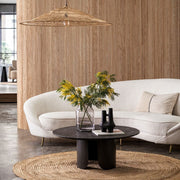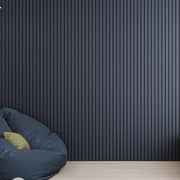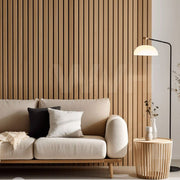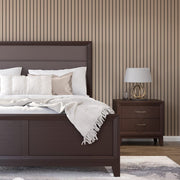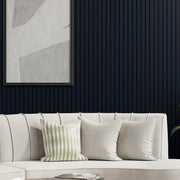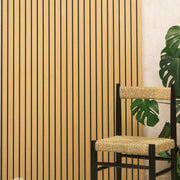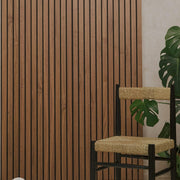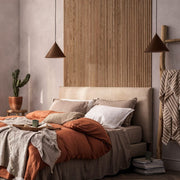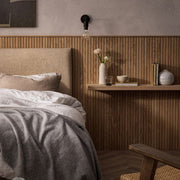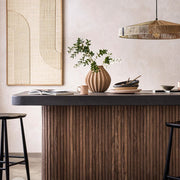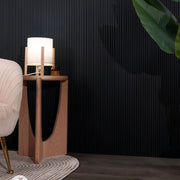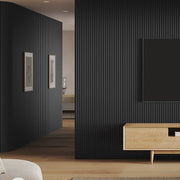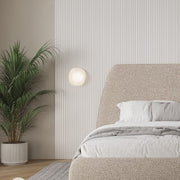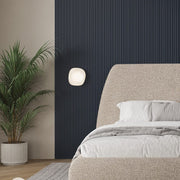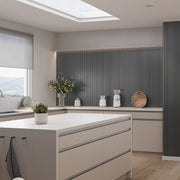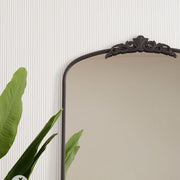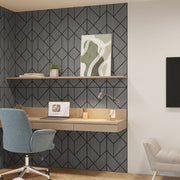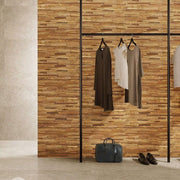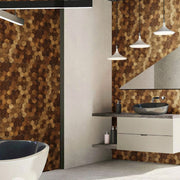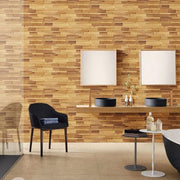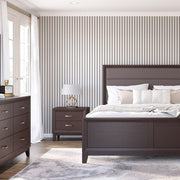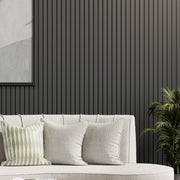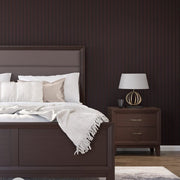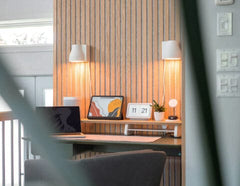Exclusively available from The Wood Veneer Hub, the range comprises both rustic and contemporary finishes, along with colorful options too. With all these different combinations to choose from, it’s no surprise that Slatpanel® is by far the most popular wooden wall paneling on offer!
To assist you in your decision making on which type of wooden wall paneling is right for you, we have listed the most commonly asked questions below:
How easy is wood wall paneling to install?
At The Wood Veneer Hub, we always aim to make the installation process as simple as possible. Along with step-by-step ‘how to install’ videos, which are bespoke to each product, any competent DIYer should find fitting a relatively easy process, and the majority of the tools required to complete the job can be found in a standard toolbox.
Does the wall need any preparation, prior to fitting?
As long as the walls’ surface is sound, with minimal hairline cracks, there is no need to fill, sand or prepare the wall prior to installation. Loose plaster and holes or larger cracks will require some attention prior to fitting, but in the main, very little preparatory work is required.
How high should the wall paneling be fitted to?
This is purely down to personal choice, and whilst some people opt to create a low level section on their walls, or panel behind a bed to create a bedhead, the majority choose to create a feature from floor to ceiling.
Single walls and even sections of a wall can look extremely effective, as can an entire room fitted in wooden wall paneling – ultimately the choice is yours!
Is wood paneling more expensive than wallpapering?
The cost of a roll of wallpaper varies immensely, from budget options to luxurious hand printed designs that command an equally high price tag! However, wallpapering is an art in itself, using requiring the services of a professional decorator, whereas wood wall paneling can frequently be fitted by a competent DIYer, offsetting the cost of the product against the labor required to fit the product.
Coupled with the thermal insulative properties that most wooden paneling offer, in the long run wooden wall paneling may actually be the more cost effective solution!
Is wall paneling only suitable for period homes?
With so many contemporary wall paneling designs available, the majority of wall panels that we supply are fitted in newer homes and modern office spaces, where an injection of character is required in the room.
Can I customize my wall paneling?
The majority of products that The Wood Veneer Hub supplies are supplied ready to install, with no requirements to retrospectively stain, wax or paint. Orac® Décor is the exception, and whilst it does not need to be painted once installed, the charm of this product is that it can be customized.
Are there any rooms in my home that wood wall paneling can't be used?
Unless the panels are likely to come into direct or prolonged contact with water, such as in a shower enclosure, then wood wall paneling can be used in almost every interior space and even on ceilings!
Wood wall paneling has been the discerning choice for so many homes, cladding walls through the ages and appearing in stately homes and even palaces, and whilst these historical styles remain iconic of their era, they have evolved into the many modern designs of wall paneling we see today.










